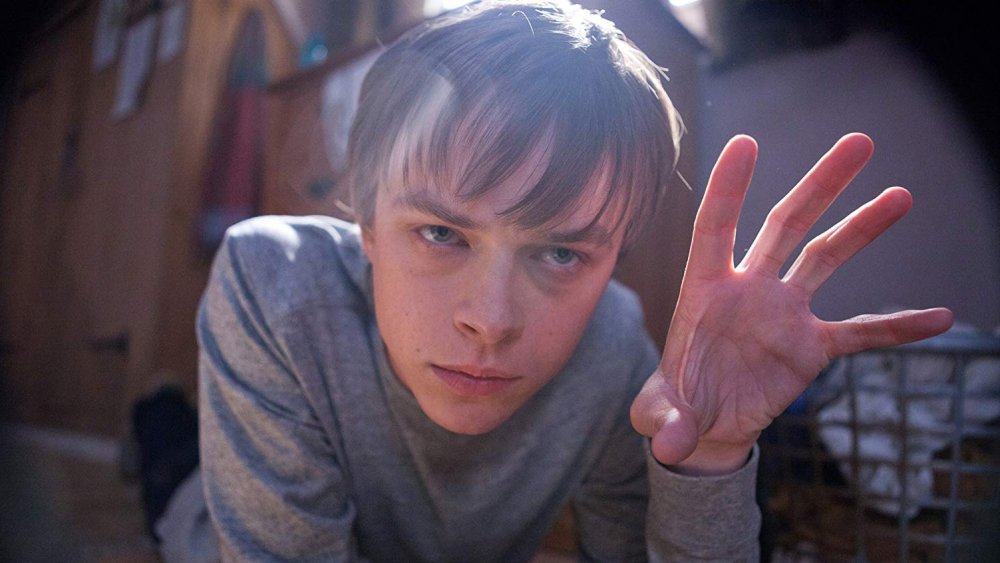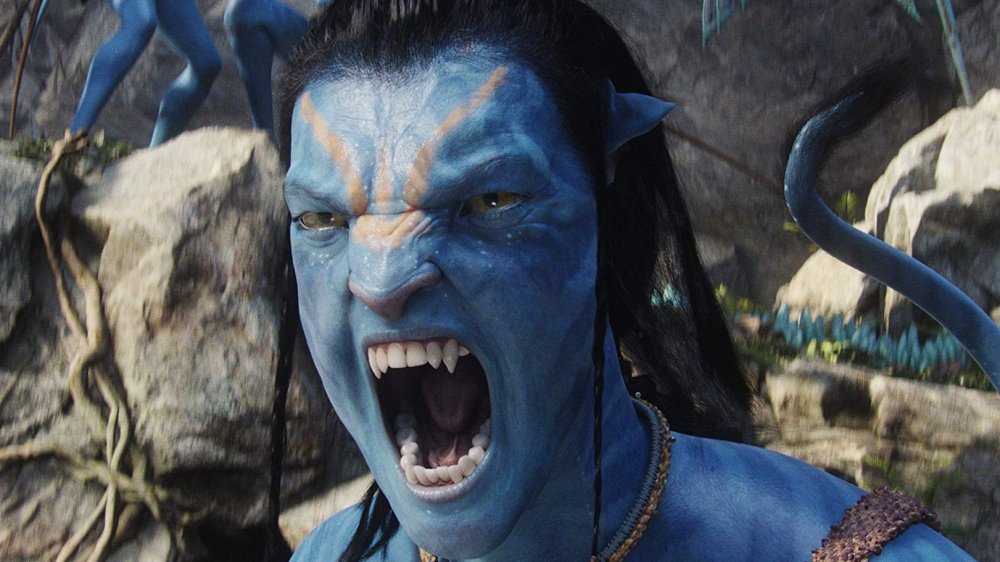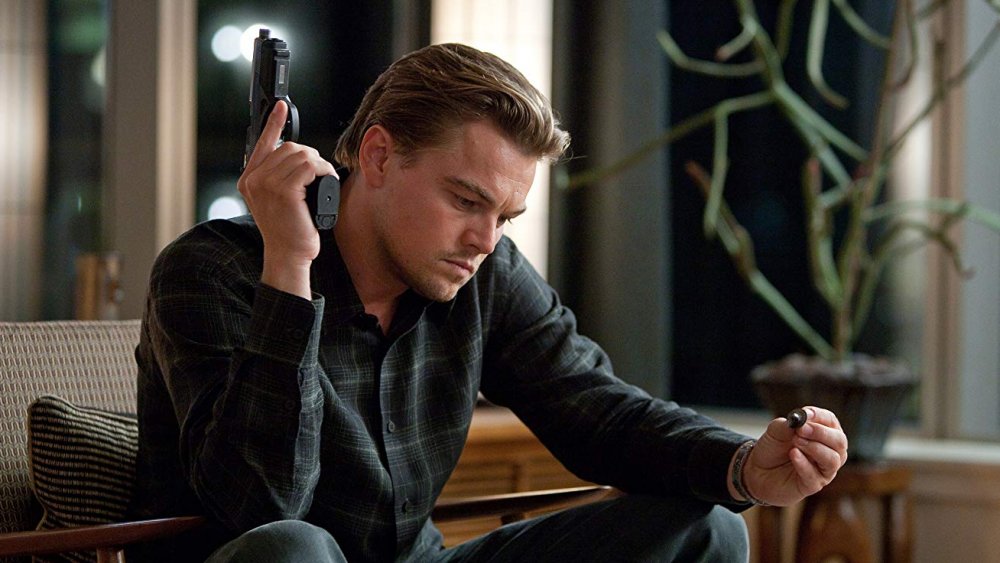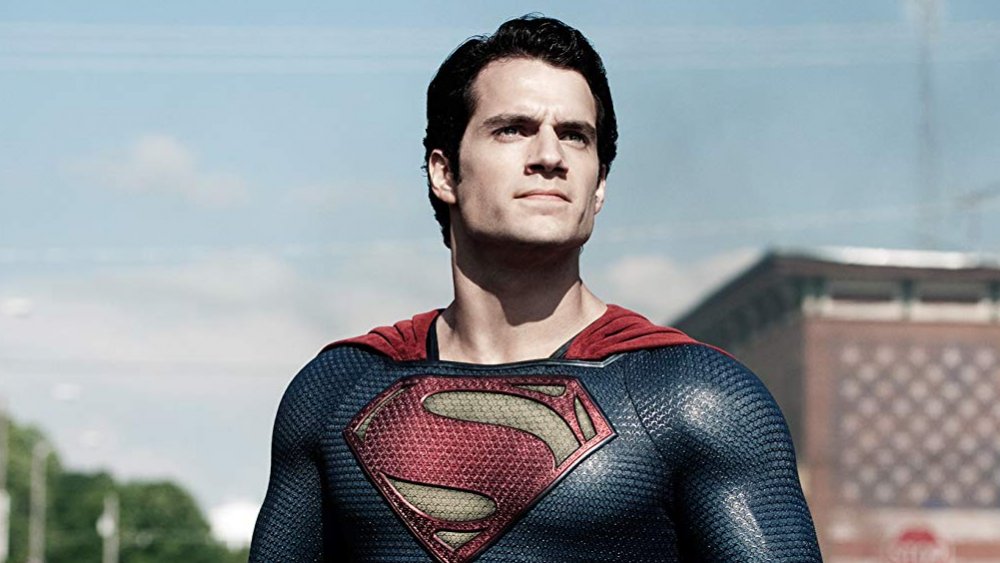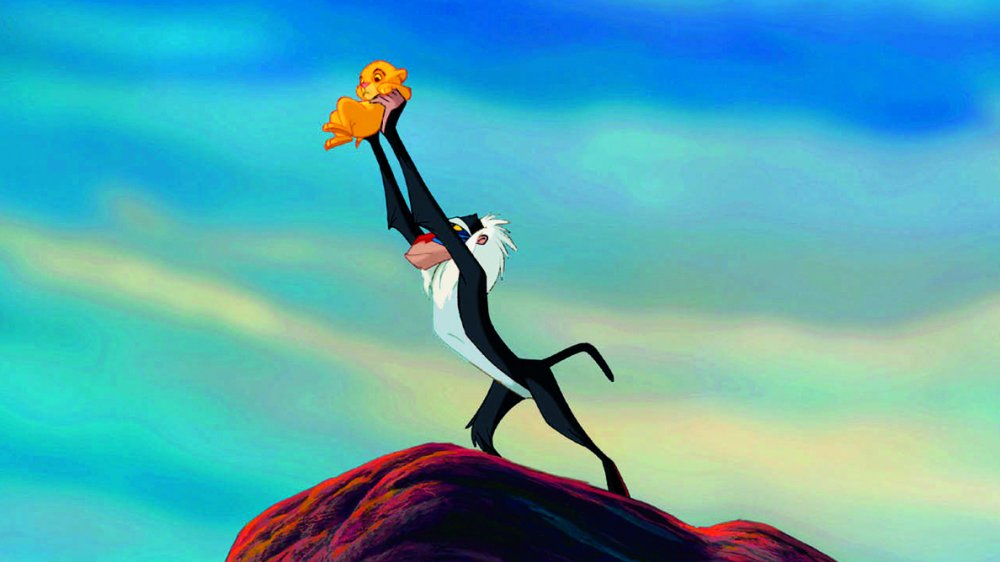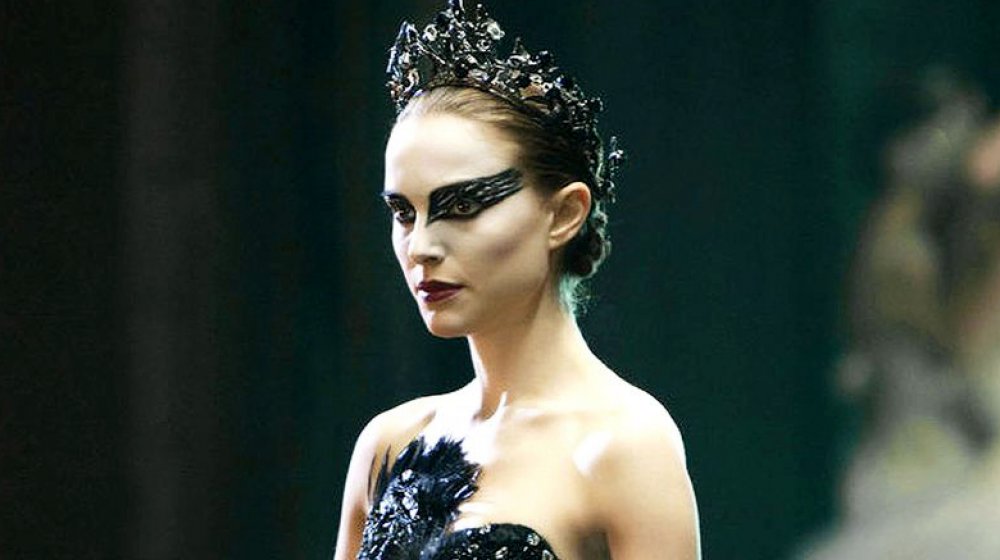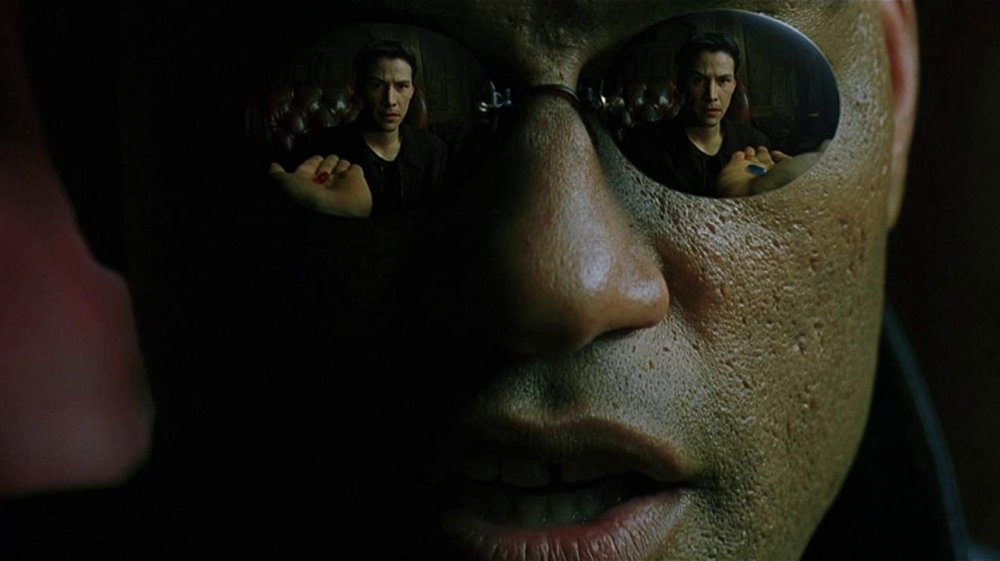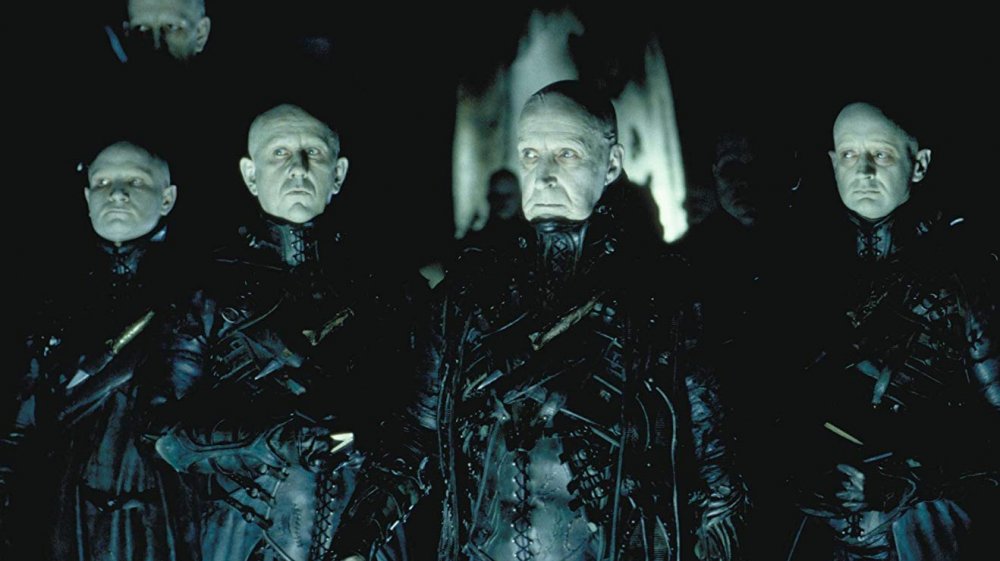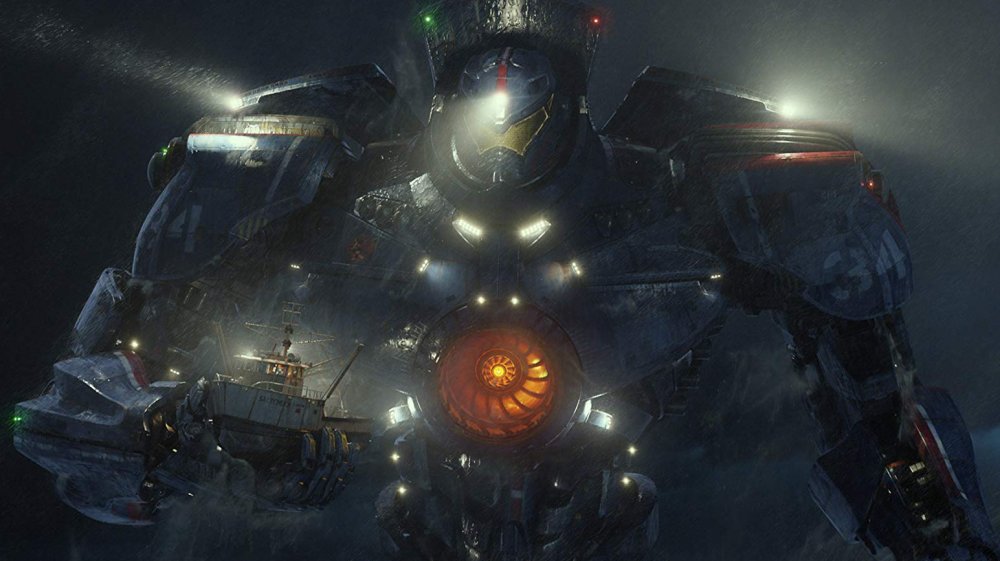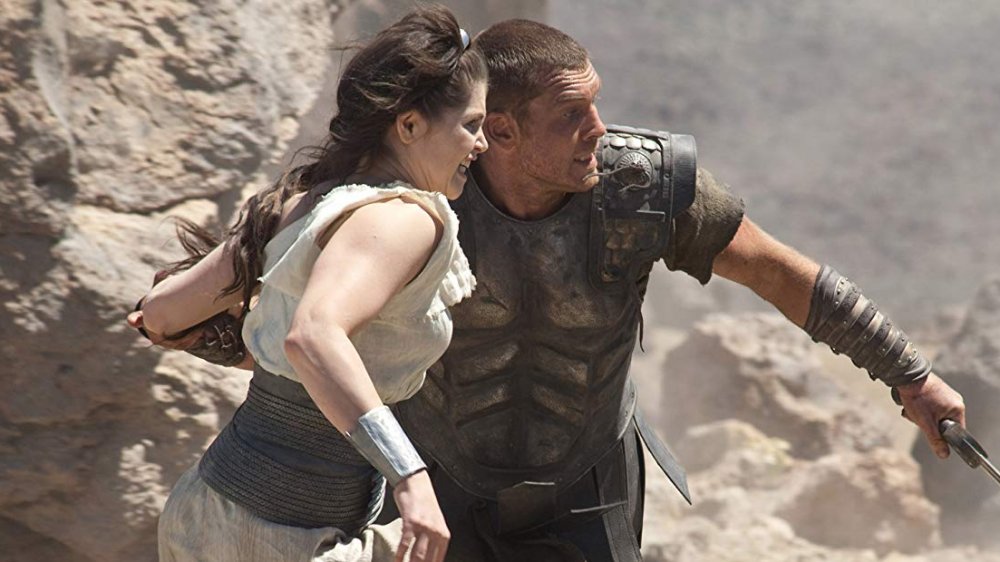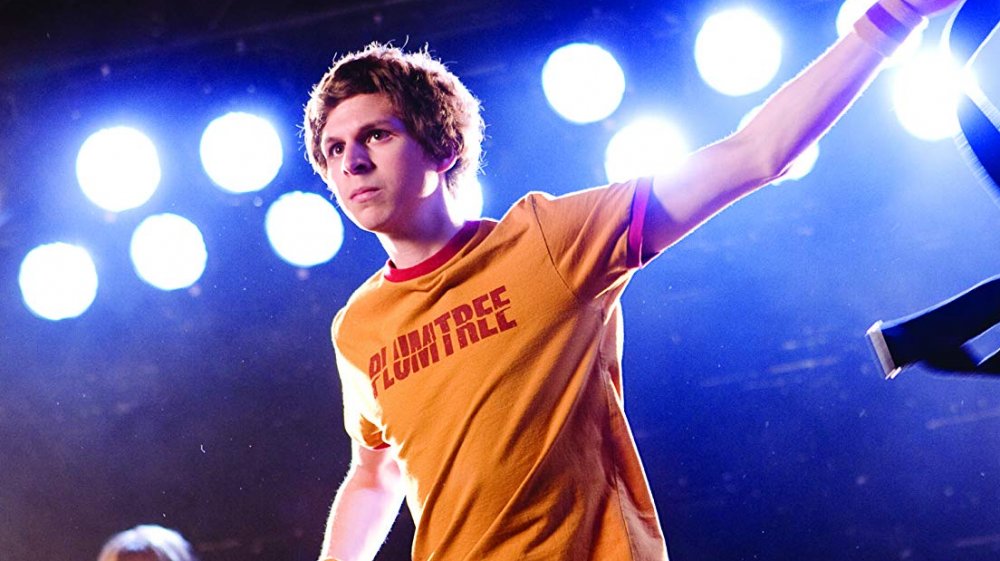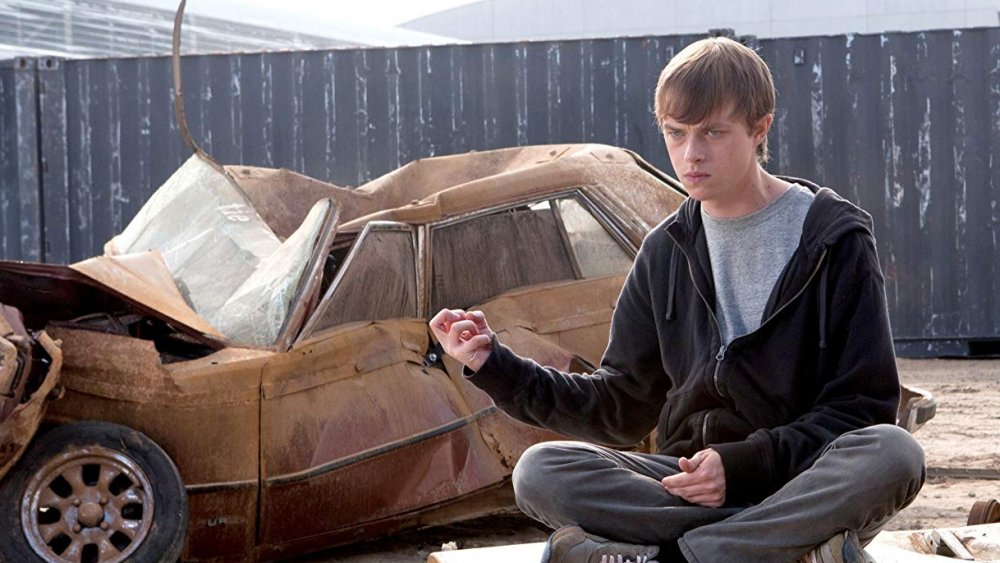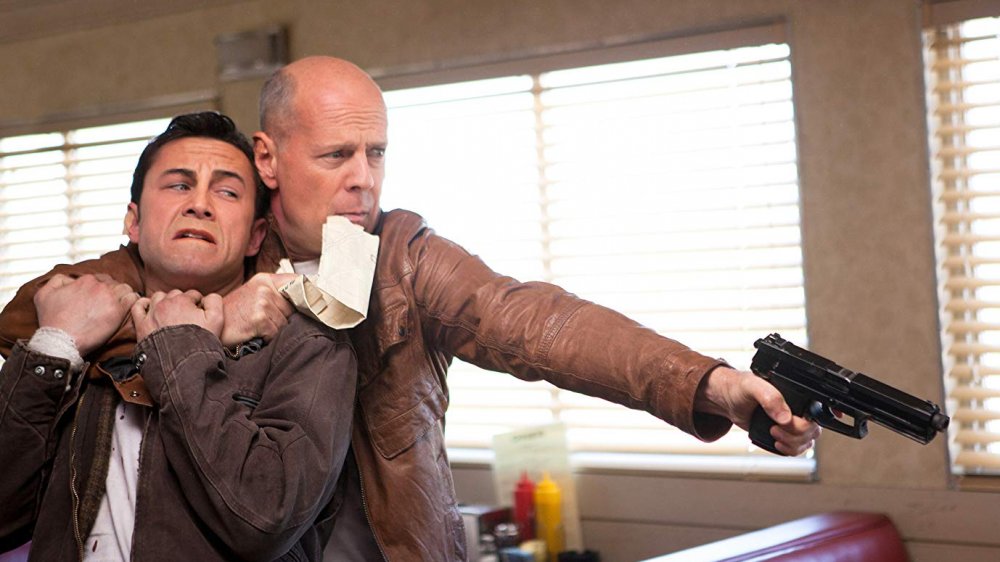Hollywood Movies You Had No Idea Were Inspired By Anime
Anime is often seen as a specific little corner of geekdom, even as it has grown in mainstream popularity over the last decade. A huge part of that growth is how much more access people have to it, with high-speed internet and streaming services helping to bring more and more anime to the west. This increase in visibility has also led to anime's growing influence on big-budget films — and some other interesting side effects.
Some filmmakers have been accused of... generously lifting elements from anime in the past. Others are much more upfront about their influences. We're going to take a look at both. These aren't big-budget remakes of popular anime, like Ghost in the Shell or Alita: Battle Angel. Rather, we're taking a look at some major Hollywood films that drew inspiration in plot or visuals from anime in some ways that might surprise you. Not all of these influences have been officially confirmed by the filmmakers, but we'll let you be the judge.
Avatar
Let's get the obvious out of the way — no, we aren't confusing Fern Gully as anime. Instead, James Cameron's money-making machine Avatar draws its anime inspiration from two of the most well-known anime films out there: Ghost in the Shell and Princess Mononoke.
Princess Mononoke shares a lot of plot beats with Avatar, as Birth.Movies.Death was happy to illustrate, pointing out that each features "two sides locked in conflict: the greedy industrial-minded humans sullying and persecuting the environment. Humans (most of them) are bastards, and the environment is not a passive recipient of the injury. It bites back out of self-defense."
That may seem coincidental, but we do know that Cameron drew some influences from anime. The Guardian writes that Cameron called the original Ghost in the Shell "a stunning work of speculative fiction... the first to reach a level of literary excellence." Avatar, of course, features a plot where humans transfer their consciousness into the bodies of aliens — extraordinarily similar to what happens in Ghost in the Shell.
Inception
Upon release, Christopher Nolan's Inception was heralded for its combination of mind-bending plot and visuals, alongside Nolan's smart directorial eye and impressive casting. It certainly felt unique in the realm of live-action blockbusters, but it doesn't take much searching to find just how much of Inception's plot seems to draw from the anime Paprika, released four years prior to Nolan's film.
The films both play with similar surrealist imagery, and Inception includes a few scenes that seem to be directly lifted from Satoshi Kon's anime. Film School Rejects points out the famous "rotating hallway" fight and a scene of reality shattering like glass as appearing very similar to one another.
It has been reported — particularly upon Kon's untimely death in 2010 — that Nolan has cited Paprika as a direct influence on Inception. Direct quotes from the filmmaker, however, seem hard to come by. Regardless, it certainly seems hard to deny that someone planted some anime dreams into his subconscious.
Man of Steel
Naturally, superhero movies have plenty of opportunity to pull from anime. A great example is Zack Snyder's Man of Steel. Snyder particularly stands out for two big reasons: his anime is a bit more off the beaten path than you'd expect, and he has readily admitted where much of the film drew inspiration from.
In an interview with Anime Anime (with translations via Reddit), Snyder was asked about anime inspirations for Man of Steel, specifically if he drew from Dragonball Z. Since Man of Steel's action scenes are so focused on one-on-one fights between immensely powerful beings, it's a logical step to take. However, Snyder says that the anime that actually inspired the fights is Birdy the Mighty.
It doesn't take long to see that inspiration, especially when clips from both films are played back to back. It's nice that Snyder was at least able to name where a lot of his imagery originated.
The Lion King
Disney has repeatedly claimed that The Lion King does not draw inspiration from the 1960s anime Kimba the White Lion. The controversy first appeared when the original, traditionally animated The Lion King was released in 1994, but it gained new traction when Disney remade the film (and remade hundreds of millions of dollars) in 2019. Looking at the two films side by side... it's tough to defend the House of Mouse.
Even setting aside the fact that "Kimba" and "Simba" are suspiciously similar names — The Hollywood Reporter even writes that The Lion King star Matthew Broderick originally thought Disney was doing a version of Kimba the White Lion when he was cast — it's really difficult to believe The Lion King was not at least inspired by the anime, if not directly lifted from it. Much of the Disney story team who worked on The Lion King claimed they had never even heard of Kimba the White Lion, which also seems dubious, considering its place in international animation.
What? The lawyers are calling? Ahem... obviously, The Lion King was wholly original and not inspired by anything other than Hamlet. Case closed.
Requiem for a Dream & Black Swan
The anime work of Satoshi Kon has inspired many filmmakers, but Darren Aronofsky has taken shown some particularly potent influence. Requiem for a Dream and Black Swan both borrow liberally from Kon's anime Perfect Blue — replicating exact shots or following extremely similar story beats.
In Requiem for a Dream, one need only look at the "bathtub scene" to see the inspiration. It is... shot for shot. There are a few other scenes in Aronofsky's film as well, but that's the most obvious one. Black Swan is where you really start to see it. Here's a description of a film by Dazed Digital, with one key description omitted: "the story of a squeaky-clean _________ whose career in the spotlight starts to loosen her grip on reality, putting her on a collision course with an evil doppelganger." Just fill in the blank — in Perfect Blue, it's "actress." In Black Swan, it's "ballet dancer."
Adding another, even more interesting layer to the puzzle is the fact that Aronofsky himself purchased the rights to Perfect Blue before he even made Requiem, as he was planning on remaking the film. Instead, it seems he just stitched his favorite pieces into other stories.
The Matrix
The Wachowski sisters are big old nerds, and drew inspiration for The Matrix from a wide variety of sources. One of the biggest inspirations on Neo's journey — both in plot and in several big set pieces — is one of the most well-known anime films out there: Ghost in the Shell.
It doesn't take a lot of imagination to see just how much The Matrix drew from Ghost in the Shell, as Birth.Movies.Death is happy to point out. Some of the details include the quick-moving green code that zooms in on a specific "user," a jack at the base of the neck that allows users to jump into the network, an epic "superhero landing" shot long before it became standard, and even a scene where shots are fired across a crowd but miss, blowing up watermelons in the process.
Outside of specific shots, the general concepts of both films are also extremely similar — a character "wakes up" to the reality of their high-tech world and learns what it really means to be alive. For their part, the Wachowskis have always been pretty upfront about stating that Ghost in the Shell was a huge influence on the film.
Dark City
He might not quite have the name recognition of some of his contemporaries, but director Alex Proyas directed a few of the most visually-memorable films of the 1990s. For many, The Crow remains his best work, but Dark City also deserves some recognition for its impressive cinematography and ahead-of-its-time subject matter. Responding to several fan questions, Proyas also revealed that Dark City's climax was an homage to one of his favorite anime films: Akira.
During a 2006 Q&A, a fan asked if the film was inspired by Dragonball, to which Proyas responded that he had never seen Dragonball, but instead drew from Akira. Dark City's finale sees its protagonist defeating his enemies, including an extremely powerful villain, in a battle very similar to Akira. The last shot of the film also appears to draw from the manga version of Akira, when the city rebuilds itself.
Surely Proyas went on to bigger and better things after these two impressive films... right? Well, he followed them with I, Robot; Knowing; and Gods of Egypt? Well... they can't all be winners.
Pacific Rim
Pacific Rim seems like a pretty obvious one — the franchise does absolutely nothing to hide its anime influence. However, we've included it here because most people look in the wrong direction when they think they see where Pacific Rim gets most of its inspiration.
When Pacific Rim was first released in 2013, many viewed it as Hollywood's take on Neon Genesis Evangelion. It seems an easy target, especially given Evangelion's massive merchandise empire. However, both director Guillermo del Toro and writer Travis Beachem both claim that Pacific Rim more drew inspiration from older sources like Gundam and Ultraman. Outside of the very superficial elements, the stories and techniques used by Pacific Rim and Neon Genesis Evangelion are not all that similar.
Del Toro purposefully did not do any research on mech anime before conceptualizing Pacific Rim, specifically so he could draw more on the memories and emotions he had on older films and shows. Maybe that's why the Pacific Rim movies are so dang joyously silly.
Clash of the Titans
We're talking about the 2010 Clash of the Titans film here, not the 1981 version (though Harry Hamlin and his robotic owl may also draw some of their inspiration from anime). What makes this story fascinating is how it circled back to the creator of the Saint Seiya anime and gave him some new opportunities.
According to Anime News Network, Clash of the Titans director Louis Leterrier is a huge fan of anime. While promoting the film, he actually name-dropped Saint Seiya and its creator, Masami Kurumada, for being major influences on his work. He said that he specifically used the armor the gods wear in his film to pay tribute to Kurumada's work.
That's very nice, but the story gets even more heartwarming. After the film's initial release, distributor Warner Bros. approached Kurumada and asked if he would like to contribute to Clash's Japanese release in any way. Kurumada agreed, and he helped design the poster for the Clash of the Titans release in Japan.
Scott Pilgrim vs. the World
Few movies lean as hard into their source material as Scott Pilgrim vs. the World, but people still may not even realize the film is based on a comic. Maybe it's because the film was released shortly after the Marvel Cinematic Universe kicked off, or maybe it's because "slacker Canadian teenager who is also Michael Cera" doesn't exactly scream "comic book movie." That said, the film wears its influence very proudly.
The art of Bryan Lee O'Malley's Scott Pilgrim comics was clearly inspired by manga and anime, and the film turns those homages up to 11. Animation World Network spoke with director Edgar Wright and concept designer Oscar Wright about the film's unique visual style. Besides the comic itself and the obvious video game references, the two also named anime influences like Afro Samurai, Naruto, Fooly Cooly, and Samurai Jack.
Edgar Wright has based his entire career on paying tribute to all the nerds out there, and Scott Pilgrim vs. the World is just another feather in that cap.
Chronicle
Chronicle didn't get nearly the amount of attention it should have. It's worth a revisit, even if it's just to see pre-Killmonger Michael B. Jordan. One thing that's undeniable on repeat viewings of the film is how much it draws from Akira, something that director Josh Trank is more than happy to discuss.
Trank told io9 that Andrew's rampage in Chronicle is his version of Tetsuo's rampage in Akira. "It's funny because if you had telekinesis and you were going on a rampage, that's just what would happen," he explained. "If this was a real event, everyone would say, 'that kid just went Akira on everyone.'" You know an influence is strong when directly describe your characters in that context.
Andrew is not directly based on Tetsuo, however. Dane DeHaan, who played Andrew (and was reportedly in the running to play Tetsuo in the long-troubled live-action remake of Akira) described the differences between the two: "Tetsuo is a bad-ass twenty something motorcycle-riding junkie. And I think that Andrew is an introverted teenager with no friends." The influence has to end somewhere.
Looper
Rian Johnson has never been shy about borrowing liberally from his favorite movies, and Looper is no exception. Akira had a major impact on many filmmakers, and Johnson used quite a bit of Tetsuo, the emotionally unstable adolescent with godlike powers, when he brought Looper's Cid to life.
Over on Reddit, fans of Looper couldn't help but notice the influence. Rian Johnson has even fessed up to it. In an AMA on the film, Johnson said he loved to combine elements from all his favorites while making films, having this to say: "If you look at Looper for instance you can see the wide range of stuff I drew from, from Terminator to Witness to Akira."
Johnson also used the same question to discuss how overrated "originality" is in filmmaking. "I think maybe 'original' isn't the real golden egg we should all be after," he explained. "'Original' is less important than just focusing on telling a story that hits the audience hard."
